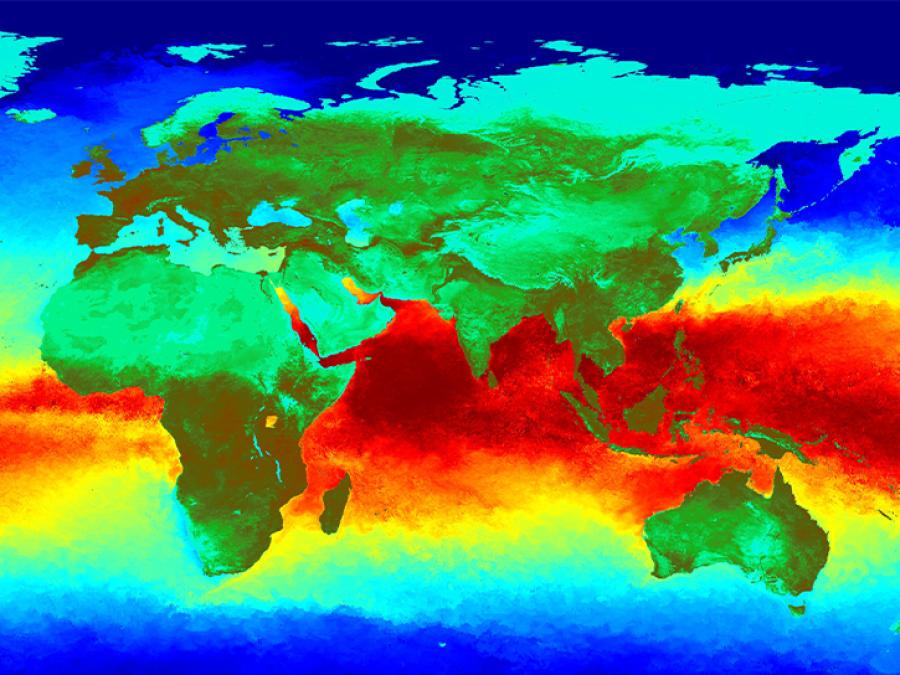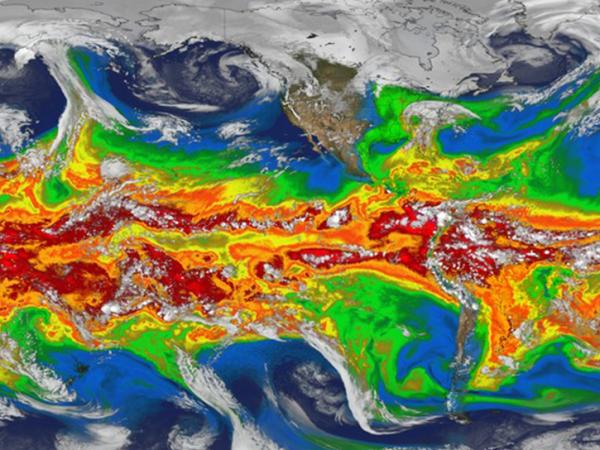


AMSR SIPS
NASA's Advanced Microwave Scanning Radiometer (AMSR) Science Investigator-led Processing System (SIPS) processes AMSR data to provide the typical Remote Sensing System (RSS) microwave radiometer ocean measurement product suite consisting of sea surface temperature, surface wind speeds (low and medium frequency), atmospheric water vapor, cloud liquid water, and rain rate.
About AMSR
AMSR has operated on three space-based platforms:
- AMSR on the JAXA (Japan Aerospace Exploration Agency) ADEOS-II platform, launched Dec 14, 2002; the satellite solar panels failed Oct 25, 2003
- AMSR-E on NASA's Earth Observing System (EOS) Aqua platform, launched May 4, 2002; the instrument stopped rotating Oct 4, 2011
- AMSR2 on JAXA's GCOM-W1 platform, launched May 18, 2012; this instrument is currently operating
AMSR-E measures geophysical parameters supporting several global change science and monitoring efforts, including precipitation, oceanic water vapor, cloud water, near-surface wind speed, sea surface temperature, soil moisture, snow cover, and sea ice parameters. All of these measurements are critical to understanding Earth's climate.
AMSR2 measures weak microwave emission from the surface and the atmosphere of the Earth. From about 700 km above the Earth, AMSR2 provides highly accurate measurements of the intensity of microwave emission and scattering. The antenna of AMSR2 rotates once per 1.5 seconds and obtains data over a 1450 km swath. This enables AMSR2 to acquire a set of daytime and nighttime data with more than 99% coverage of the Earth every 2 days.
The AMSR instruments are dual-polarized, conical scanning, passive microwave radiometers. Each is placed in a near-polar orbit which allows for up to twice daily sampling of a given Earth location. A key feature of these AMSR instruments is the ability to see through clouds, thereby providing an uninterrupted view of the ocean measurements.
AMSR Data and Services
The AMSR-E Level1 (L1) products are generated by JAXA and and distributed to the SIPS-RSS for processing to Level 2A (L2A). These are then forwarded to NASA's Global Hydrometeorology Resource Center Distributed Active Archive Center (GHRC DAAC), which is jointly managed by NASA's Marshall Space Flight Center in Huntsville, Alabama, and The University of Alabama in Huntsville, for processing of Level 2B (L2B) and Level 3 EOS standard products. These products, metadata, and associated documentation are archived and distributed by NASA's National Snow and Ice Data Center DAAC (NSIDC DAAC).
As one of NASA's Land, Atmosphere Near real-time Capability for Earth observation (LANCE) elements, the AMSR2 Science Investigator-led Processing System (SIPS) provides Level 2 and Level 3 near real-time (NRT) products. NRT processing for AMSR2 data is conducted by the LANCE AMSR2 SIPS at NASA's GHRC DAAC. Once processed, NRT data can be assessed through the LANCE AMSR2 NRT Products page on the GHRC DAAC website and can be viewed using NASA's Worldview data visualization tool or any geographic information system (GIS) software capable of reading and visualizing data in HDF-EOS5 format. AMSR2 standard data products designed to support scientific research is sent to NSIDC DAAC.
NSIDC DAAC is responsible for processing, managing, archiving, and distributing data related to snow and ice processes (particularly interactions among snow, ice, atmosphere, and the ocean). Research-quality AMSR2 data dating back to July 4, 2012, are available. NSIDC DAAC also stores research-quality data from AMSR-E instrument dating from June 2002 through October 2011.
Location
CoreTrustSeal Certified Repository
We are proud to be a CoreTrustSeal Certified Repository. CoreTrustSeal is an international, community based, non-governmental, and non-profit organization promoting sustainable and trustworthy data infrastructures.
